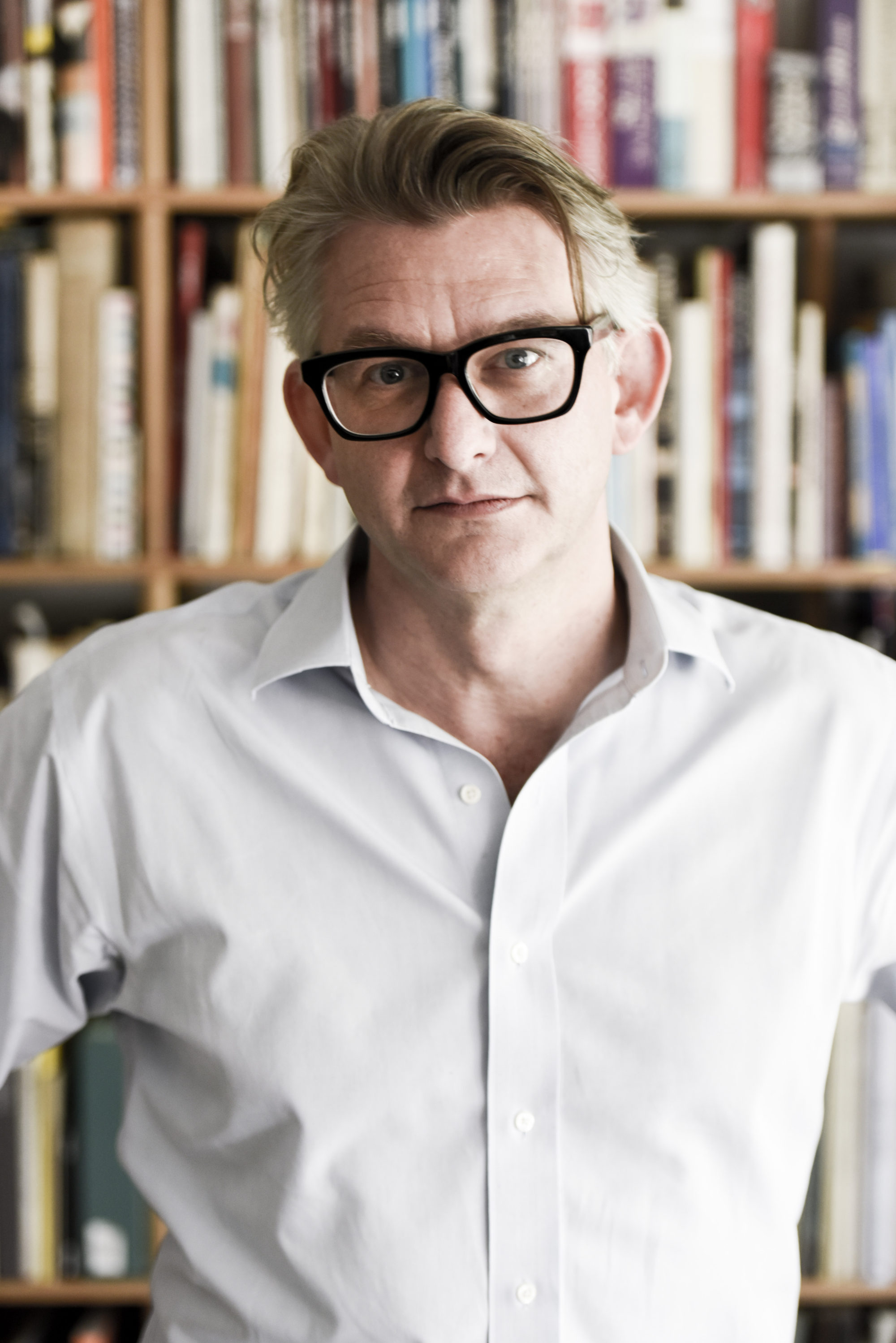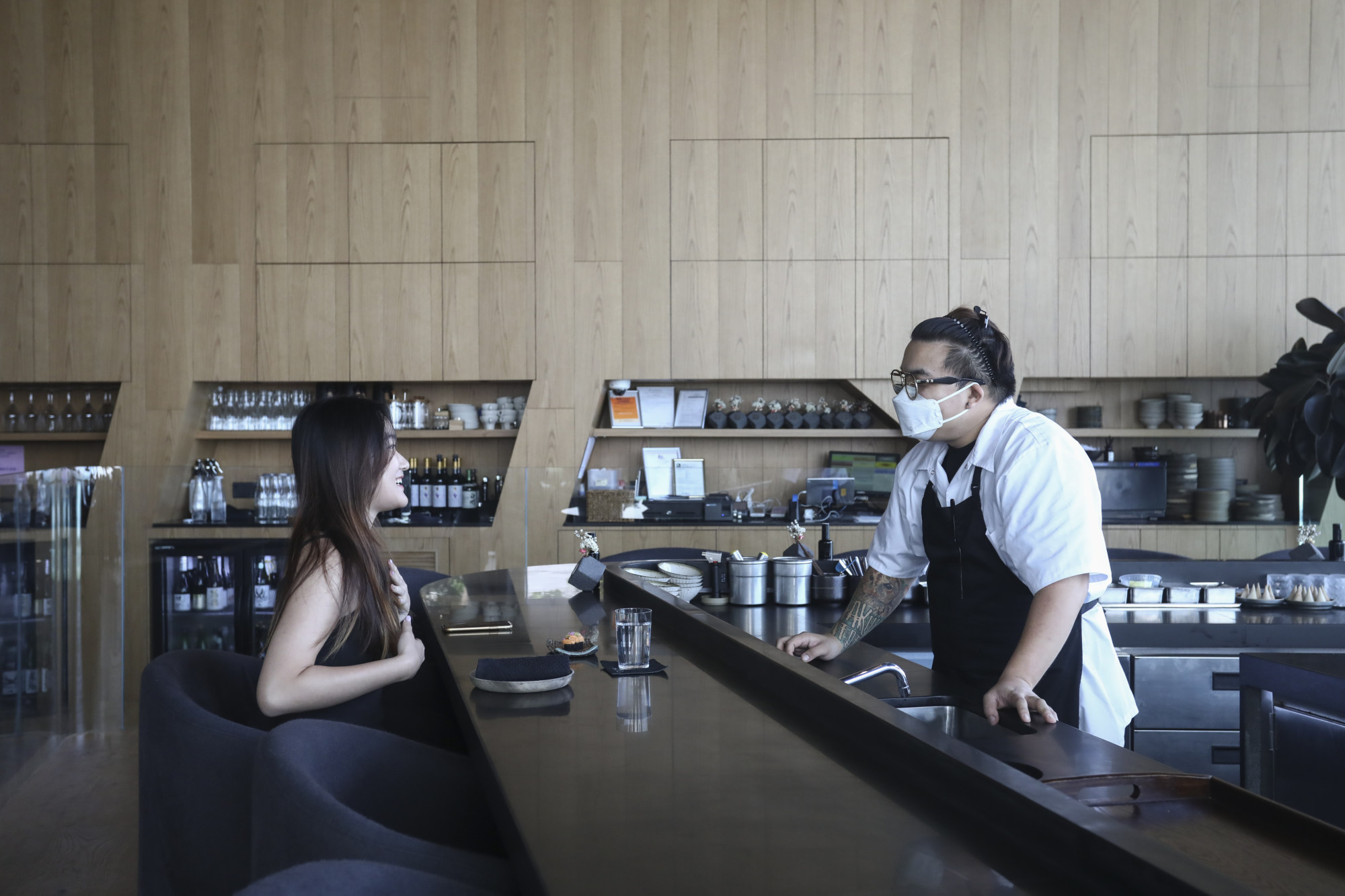
How Hong Kong restaurant Haku’s interior design was inspired by its eclectic menu and music playlist
- Irreverent, creative and unexpected are how architect Sean Dix describes the playlist at Haku – music which influenced his design for the Hong Kong restaurant
- The design, which draws from the Brutalism popular in 1970s Japan, places centre stage the chefs turning Japanese ingredients into contemporary cuisine
“I am the Batman of love.” At Haku, you might find yourself humming along to Alvin Kwok Siu-lam’s 1987 Canto-pop single Batman Of Love while you devour fried chicken and caviar – but you are equally likely to be sampling Jerusalem artichoke ice cream while listening to ’90s alternative rock groups Radiohead and Blur.
The playlist at the restaurant in Hong Kong’s Central district, which serves contemporary cuisine made with Japanese ingredients, is as eclectic as executive chef Rob Drennan’s menu.
“I love Rob’s playlist,” says architect Sean Dix. “It is irreverent, creative and unexpected – not unlike his great cooking. His playlist is perfect as a backdrop for the Haku dining experience.”

Although there are “other glass boxes up there with restaurants inside them”, Dix says, they place the kitchen out of sight or to the side. At Haku, he decided to take up room by the window. “To my knowledge, we are the only ones that shifted the axis of a restaurant this way, so that the focal point is the kitchen and chef,” he says.
His design places Haku’s chefs centre stage – diners sit at a wraparound counter facing the open, sunken kitchen at the heart of the 2,000 sq ft (186 square metre) restaurant, with views of Victoria Harbour and Kowloon forming the backdrop.

Guests can engage with the chef and the team at eye level thanks to the difference in floor height. “By lowering the floor [of the kitchen], we created a dynamic that allows seated diner and standing chef more intimacy,” says Dix.
“We didn’t want to simply raise the seating and counter – people are always more comfortable in a generous armchair with their feet on the floor than they are sitting on a stool.”

Dix tips his hat to the architectural style, which emerged in the UK in the 1950s and which the Japanese excelled at in the 1970s, to express not only the restaurant’s Japanese foundations but also Drennan’s innovative gastronomy.
“Brutalism is international, and every culture – Japan in particular – played with it in different ways. It seemed a good metaphor for Rob’s international but Japanese-influenced cooking,” says Dix.
“I love the stripped-down, essential nature of Brutalism. It is international but was also influenced by Japanese minimalism, so it seemed a good fit for Haku. It’s textured, tactile, honest, direct and it seemed to me to be the perfect calm frame for Rob’s very dramatic food.”

Similar to the contrast between an electronic band like the US-based Chromatics and Japanese psychedelic folk group Kikagaku Moyo, the clean lines of the granite counters are disrupted by the Dix-designed, modern, mohair-upholstered armchairs in which guests are ensconced.
The music – an important part of the Haku experience – was one of the biggest challenges Dix faced when planning the interiors. “Managing acoustics was a major challenge in this space, mainly because of the dramatic ceiling heights and quantity of glass windows,” he says.
“When we first came into the space we could immediately hear that sound was bouncing all over the place and it was chaotic. We knew we needed to absorb as much sound as possible, so we created an acoustic ceiling, textured walls, and even acoustic treatments under the tables and counters. It really helped to calm the space.”

